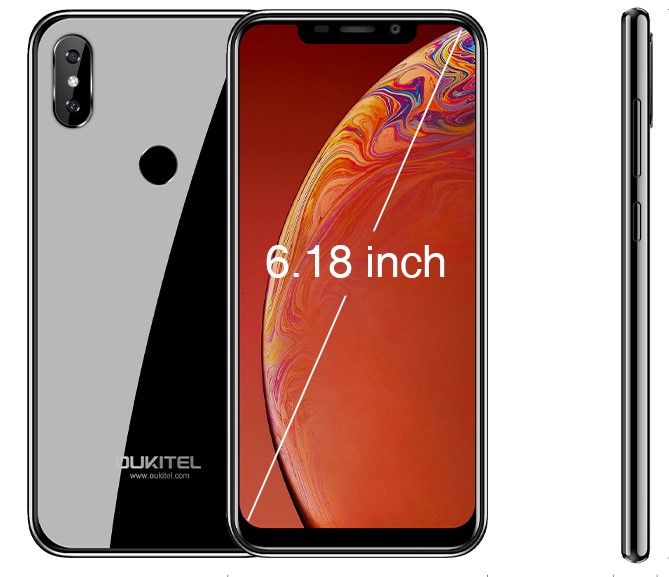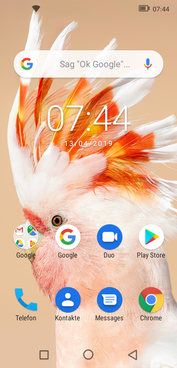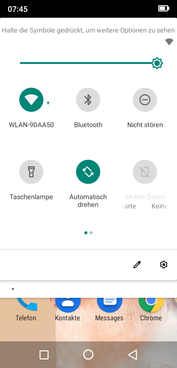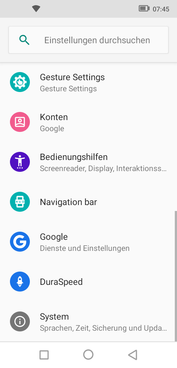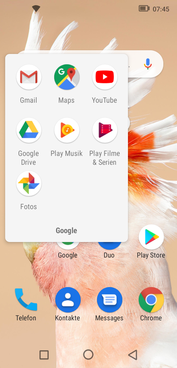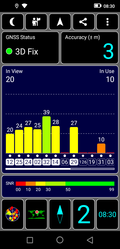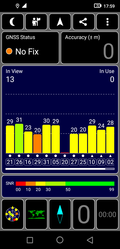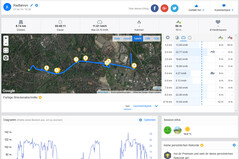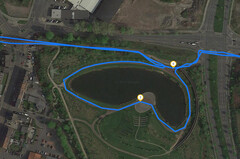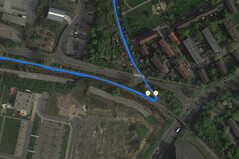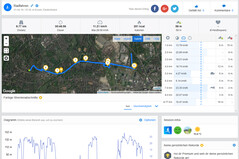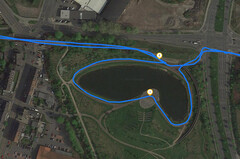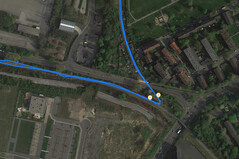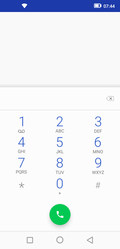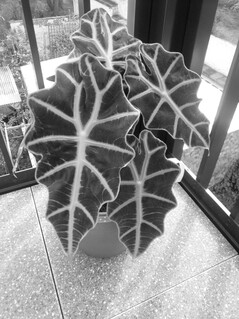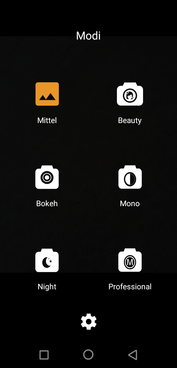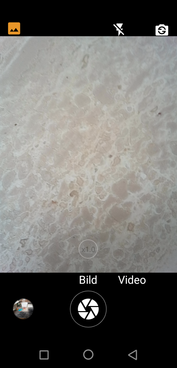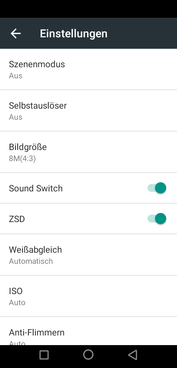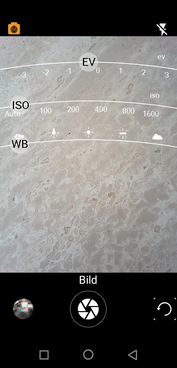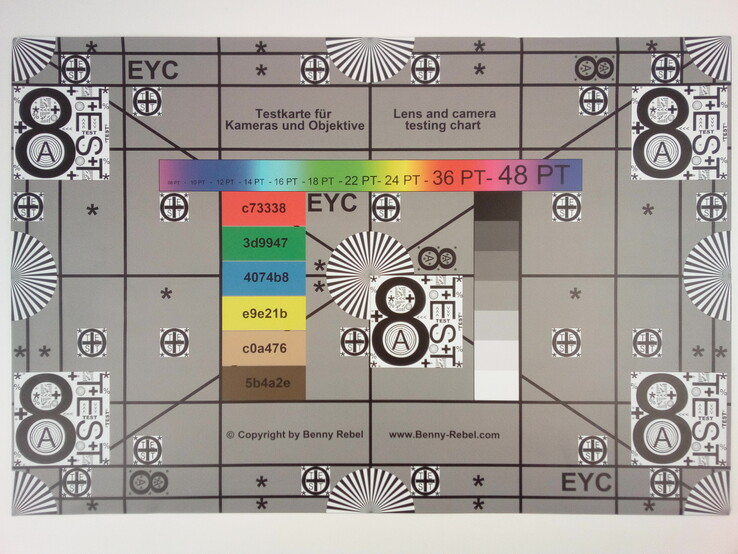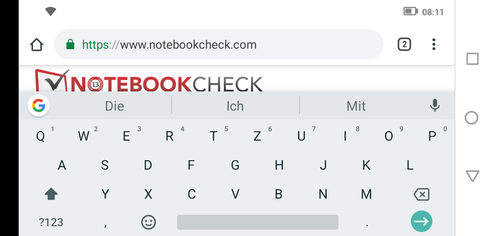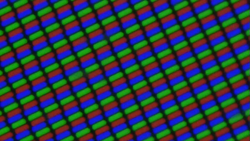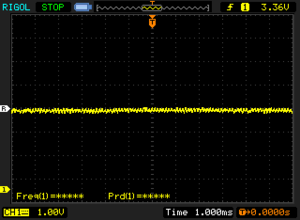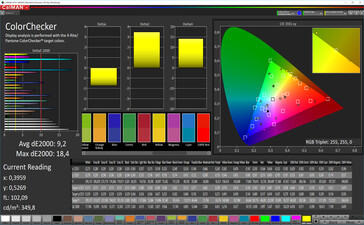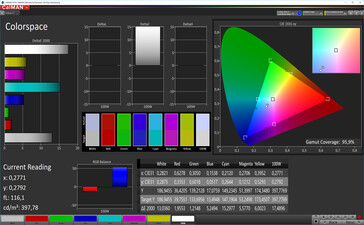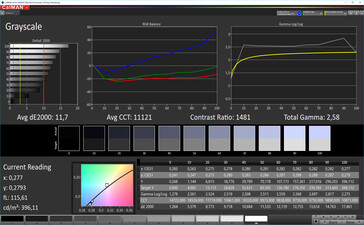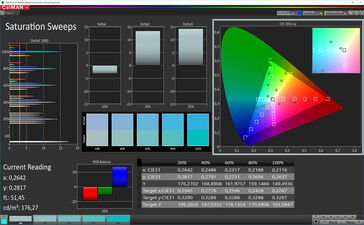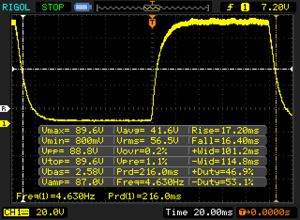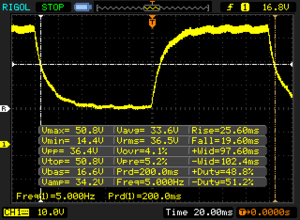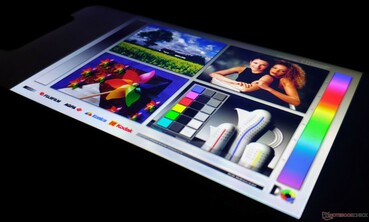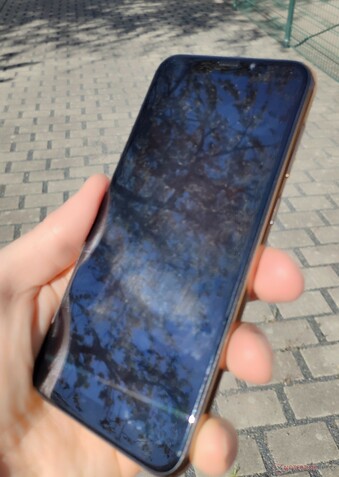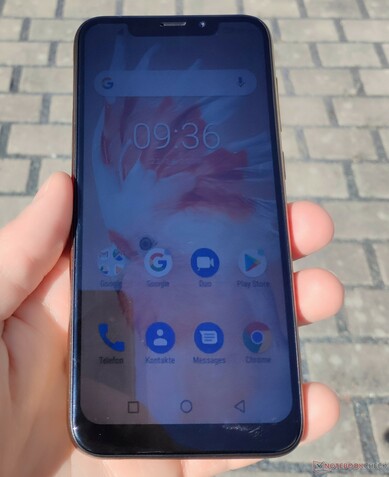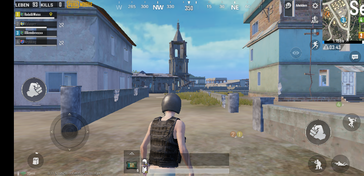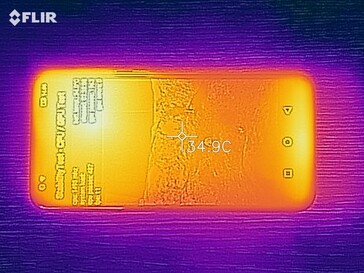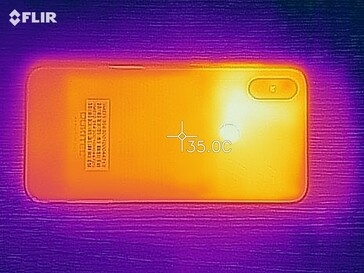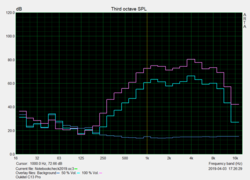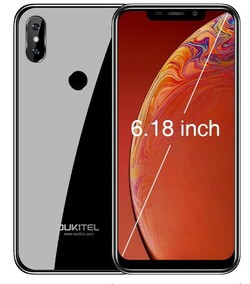Oukitel C13 Pro Smartphone Review
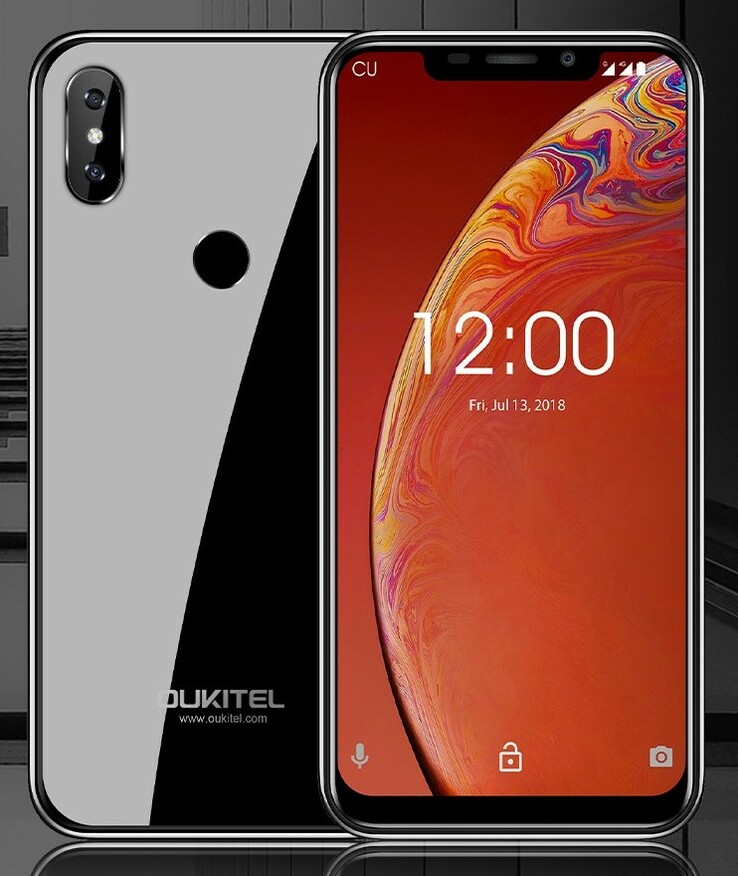
The 6.18-inch C13 Pro from Oukitel looks like an entry-level smartphone with relatively small bezels. However, one cannot overlook the fact that it very closely resembles Apple’s iPhone X and XS.
As is usual for smartphones in this price range, the Oukitel C13 Pro features very anemic hardware. It is powered by the Mediatek MT6739 and has only 2 GB of RAM. The IPS display has a native resolution of 996x480, which is why it is not very sharp. However, the manufacturer claims that it is “terrifically bright”.
The LTE-enabled smartphone comes in two color schemes: Black and Gold. Currently, it can be purchased from importers for about 70 Euros ($78). The device can also be bought from German distributors. Here, the prices on Amazon.de start at about 90 Euros ($100) (shipping through Amazon).
The Oukitel U25 Pro is the main competitor of the C13 Pro, which is also manufactured by Oukitel. Other competing devices include: the Nokia 2.1, the Cubot J3 as well as Xiaomi’s Redmi 6A and Redmi Go.
Case - Oukitel C13 Pro’s build quality meets expectations
The scratch-proof 2.5D front display glass is slightly curved and melds seamlessly with the plastic sides. The bezels of the 6.18-inch screen are quite small for an entry-level smartphone. Therefore, the screen-to-body ratio amounts to 82%.
The volume rocker as well as the power button leave a solid impression. The buttons sit firmly in their respective cutouts and have a clear actuation point. The rest of the smartphone is also surprisingly well made.
Connectivity - Oukitel smartphone with a 3.5-mm headphone jack
16 GB of internal eMMC memory is not a lot, but defensible, given the fact that the smartphone costs roughly 70 Euros ($78). Only 10 GB thereof is available to the user, the rest of the storage space is occupied by the operating system. Those who need more storage space can insert a MicroSD card with a capacity of up to 128 GB into the smartphone. External storage can be formatted as internal memory. However, the file system known as exFAT is not supported by the device.
The C13 Pro has a Micro USB port, which operates at USB 2.0 speeds. The smartphone is charged through this port. Peripheral devices cannot be connected to the C13 Pro, because it does not support USB OTG. The smartphone can wirelessly cast its screen content to an external display. The 6.18-inch Oukitel smartphone can only play back DRM-protected content on streaming websites such as Netflix and Co in SD quality, because it only supports Google's Widevine L3 DRM. Given the low resolution of the C13 Pro’s display, this is quite bearable.
The Oukitel smartphone does not feature an LED status light. However, it comes with a finger-print sensor and an FM radio, which can only be used with the included in-ear headphones. The C13 Pro also supports Dual-SIM functionality.
Software - C13 Pro with Android 9.0
The Chinese smartphone runs Android 9.0 with a proprietary UI. The security patches were last updated in February 2018, which is why they cannot be considered current.
The manufacturer’s user interface looks a lot like stock Android. Moreover, the smartphone comes with no third-party apps pre-installed.
Communication and GPS - Oukitel C13 Pro without NFC
The Oukitel smartphone features support for Bluetooth 4.0, but not for Near Field Communication (NFS).
The integrated Wi-Fi module supports the following wireless communications standards: 802.11 a, b, g and n and operates in the 2.4 and 5 GHz spectral bands. In day-to-day use, we did not encounter any reception problems. In close proximity to the router (Telekom Speedport, W921V), we measured a signal attenuation of -52 dBm. With our reference-grade router Linksys EA8500, the Oukitel smartphone achieves an average data reception rate of 94 Mb/s and an average date transmission rate of 84 Mb/s.
In the mobile Internet, the Dual-SIM smartphone can achieve a download speed of up to 150 Mb/s (LTE Cat. 4). Both SIM card slots support LTE. However, the built-in 4G modem can only operate in 5 LTE bands. When compared to other imported smartphones, the C13 Pro features support for LTE Band 20.
| Networking | |
| iperf3 transmit AX12 | |
| Xiaomi Mi 9 | |
| Oukitel C13 Pro | |
| Oukitel U25 Pro | |
| Xiaomi Redmi Go | |
| Xiaomi Redmi 6A | |
| Nokia 2.1 | |
| Cubot J3 | |
| iperf3 receive AX12 | |
| Xiaomi Mi 9 | |
| Oukitel U25 Pro | |
| Oukitel C13 Pro | |
| Xiaomi Redmi 6A | |
| Xiaomi Redmi Go | |
| Cubot J3 | |
| Nokia 2.1 | |
When it comes to geolocation, the C13 Pro supports GPS and GLONASS. Outdoors, the Chinese smartphone has a margin of error of roughly 3 meters (~10 feet). In general, the device connected to the satellites in a fast and reliable fashion, but at times it took the C13 Pro several minutes to establish a connection. When we tried to acquire our location indoors, our review device failed to do so.
In order to determine how accurate our review device is when it comes to geolocation, we take it with us on a bike ride. The low-priced smartphone mapped the route that we took very accurately, which is why it should be good enough for occasional navigation, provided that it can connect to the navigation satellites.
Telephony and Call Quality - Oukitel WP1 with Wi-Fi calling and VoLTE
During our review, we did not encounter any issues while making phone calls. The voices are reproduced clearly. We find the quality of the microphone to be satisfactory and our call partner describes the voices on the other end as clear and intelligible.
You can enable Voice over LTE (VoLTE), which allows you to make phone calls over 4G networks, and Wi-Fi calling, which allows you to place phone calls over a Wi-Fi connection, in the settings menu.
Cameras - Oukitel C13 Pro with a dual-camera
The CMOS image sensor on the back of the device has a resolution of 8 MP (2448x3264). There is also a secondary 2 MP image sensor on the back, which is responsible for depth perception. In theory, this should allow the smartphone to create depth maps, which can be used to produce a Bokeh effect in photographs. However, covering up the second lens did not have any impact on the Bokeh effect, which means that it is generated completely through software.
These days, an f/2.8 aperture can only be described as subpar. In low-light conditions, the 8 MP rear camera consistently delivers unusable images. Under good lighting conditions, the image quality is not even good enough for social media. The processing times of the camera are also very long.
As you can expect from a smartphone in this price range, the image quality of the front-facing camera is very poor. The color reproduction of the 5 MP selfie camera is just as poor as that of the main camera. The front-facing shooter can record video at 720p 30 FPS. The rear camera can shoot video in 1080p at 30 FPS.
Accessories and Warranty - Oukitel smartphone with a protective cover
The box contains the smartphone itself, a USB cable, a plastic protective cover and a modular EU charger (1 A, 5 V).
The C13 Pro comes with a 12-month warranty. Go to our guide to learn what you need to look out for when importing a smartphone.
Input Devices and Handling - The fingerprint scanner in the Oukitel C13 Pro is barely usable
The capacitive multi-touch screen of the Oukitel C13 Pro recognizes inputs most of the time reliably and quickly. There are times when certain inputs are registered incorrectly, but this seems to be the fault of a weak SoC rather than the touchscreen itself.
The touchscreen can recognize up to 5 fingers at the same time. The anti-fingerprint coating on the screen feels pleasant and smooth. However, the display is still pretty susceptible to fingerprints. The smartphone is controlled via the usual on-screen buttons. There are no other ways to control the device.
The fingerprint scanner on the back is both slow and unreliable. It takes actually several seconds for the smartphone to be unlocked using the built-in fingerprint sensor. The FaceLock feature works better. However, it uses simple 2D-based facial recognition technology. It works reliably, but is very slow.
Display - C13 Pro with a 480p IPS panel
The LCD screen of the C13 Pro has a resolution of 996x480 and an 18.7:9 aspect ratio. It measures 6.18 inches diagonally and therefore has a pixel density of 180 ppi, which is very low. This is why media content and text, in particular, do not look sharp on the screen.
The maximum screen brightness of 388 cd/m² is not very high, but the brightness distribution of 88% is quite good. In our realistically oriented APL50 test, in which the screen displays a pattern that consists of evenly distributed dark and bright areas, the display only manages to achieve 295 cd/m².
| |||||||||||||||||||||||||
Brightness Distribution: 88 %
Center on Battery: 388 cd/m²
Contrast: 1492:1 (Black: 0.26 cd/m²)
ΔE ColorChecker Calman: 9.2 | ∀{0.5-29.43 Ø4.77}
ΔE Greyscale Calman: 11.7 | ∀{0.09-98 Ø5}
95.9% sRGB (Calman 2D)
Gamma: 2.58
CCT: 11121 K
| Oukitel C13 Pro IPS LCD, 996x480, 6.2" | Oukitel U25 Pro IPS LCD, 1920x1080, 5.5" | Nokia 2.1 IPS, 1280x720, 5.5" | Xiaomi Redmi 6A IPS, 1440x720, 5.5" | Cubot J3 TN LED, 960x480, 5" | Xiaomi Redmi Go IPS, 1280x720, 5" | Xiaomi Mi 9 AMOLED, 2340x1080, 6.4" | |
|---|---|---|---|---|---|---|---|
| Screen | 8% | 10% | 21% | -92% | 7% | 62% | |
| Brightness middle (cd/m²) | 388 | 649 67% | 338 -13% | 404 4% | 400 3% | 340 -12% | 593 53% |
| Brightness (cd/m²) | 402 | 623 55% | 327 -19% | 400 0% | 401 0% | 309 -23% | 587 46% |
| Brightness Distribution (%) | 88 | 90 2% | 82 -7% | 82 -7% | 92 5% | 77 -12% | 94 7% |
| Black Level * (cd/m²) | 0.26 | 0.56 -115% | 0.27 -4% | 0.26 -0% | 1.7 -554% | 0.28 -8% | |
| Contrast (:1) | 1492 | 1159 -22% | 1252 -16% | 1554 4% | 235 -84% | 1214 -19% | |
| Colorchecker dE 2000 * | 9.2 | 7.1 23% | 5.36 42% | 4.28 53% | 13.79 -50% | 5.53 40% | 0.9 90% |
| Colorchecker dE 2000 max. * | 18.4 | 12.6 32% | 9.77 47% | 9.97 46% | 20.74 -13% | 9.87 46% | 2 89% |
| Greyscale dE 2000 * | 11.7 | 9.4 20% | 6.2 47% | 3.5 70% | 16.5 -41% | 6.4 45% | 1.5 87% |
| Gamma | 2.58 85% | 2.1 105% | 2.345 94% | 2.213 99% | 3.19 69% | 2.275 97% | 2.27 97% |
| CCT | 11121 58% | 8629 75% | 8460 77% | 6899 94% | 21261 31% | 8198 79% | 6548 99% |
* ... smaller is better
Screen Flickering / PWM (Pulse-Width Modulation)
| Screen flickering / PWM not detected | |||
In comparison: 53 % of all tested devices do not use PWM to dim the display. If PWM was detected, an average of 8084 (minimum: 5 - maximum: 343500) Hz was measured. | |||
Because an IPS panel always has to use a backlight, it can never achieve the same deep blacks as an OLED panel. However, the C13 Pro has a rather low black value of 0.26 cd/m². The contrast ratio of 1500:1 is also quite good. That being said, both the contrast ratio (843:1) and the black value (0.35 cd/m²) turn out to be much worse in the APL50 test.
We use a photospectrometer running SpectraCal's CalMAN software to measure the color accuracy of the display. Both the grayscale (11.7) and the mixed and primary colors (9.2) deviate significantly from the sRGB standard. At 11000 Kelvin, the color temperature of the display is also too high. We can observe a bluish cast in day-to-day use.
Display Response Times
| ↔ Response Time Black to White | ||
|---|---|---|
| 33.6 ms ... rise ↗ and fall ↘ combined | ↗ 17.2 ms rise | |
| ↘ 16.4 ms fall | ||
| The screen shows slow response rates in our tests and will be unsatisfactory for gamers. In comparison, all tested devices range from 0.1 (minimum) to 240 (maximum) ms. » 90 % of all devices are better. This means that the measured response time is worse than the average of all tested devices (20.2 ms). | ||
| ↔ Response Time 50% Grey to 80% Grey | ||
| 45.2 ms ... rise ↗ and fall ↘ combined | ↗ 25.6 ms rise | |
| ↘ 19.6 ms fall | ||
| The screen shows slow response rates in our tests and will be unsatisfactory for gamers. In comparison, all tested devices range from 0.165 (minimum) to 636 (maximum) ms. » 77 % of all devices are better. This means that the measured response time is worse than the average of all tested devices (31.6 ms). | ||
Performance - Mediatek MT6739 with 2 GB of RAM
The Mediatek MT6739 in the Oukitel smartphone is an ARM-based SoC from 2017. It has four 64-bit, Cortex-A53 cores that are clocked at 1.5 GHz. The PowerVR GE8100 serves as the graphics unit. It has a core frequency of 570 MHz.
Together with only 2 GB of RAM, the entry-level CPU offers solid system performance – here the low pixel density of the display comes in handy. Nevertheless, the Oukitel smartphone brings up the rear in our benchmark suite - with the exception of the PCMark benchmarks. The PowerVR GE8100, in particular, cannot keep up with the competition.
| PCMark for Android | |
| Work performance score (sort by value) | |
| Oukitel C13 Pro | |
| Oukitel U25 Pro | |
| Nokia 2.1 | |
| Xiaomi Redmi 6A | |
| Cubot J3 | |
| Xiaomi Redmi Go | |
| Xiaomi Mi 9 | |
| Average Mediatek MT6739 (3742 - 5136, n=11) | |
| Work 2.0 performance score (sort by value) | |
| Oukitel C13 Pro | |
| Oukitel U25 Pro | |
| Nokia 2.1 | |
| Xiaomi Redmi 6A | |
| Xiaomi Redmi Go | |
| Xiaomi Mi 9 | |
| Average Mediatek MT6739 (2467 - 5377, n=16) | |
| GFXBench 3.0 | |
| on screen Manhattan Onscreen OGL (sort by value) | |
| Oukitel C13 Pro | |
| Oukitel U25 Pro | |
| Nokia 2.1 | |
| Xiaomi Redmi 6A | |
| Xiaomi Redmi Go | |
| Xiaomi Mi 9 | |
| Average Mediatek MT6739 (4.4 - 10, n=16) | |
| Average of class Smartphone (18 - 166, n=157, last 2 years) | |
| 1920x1080 1080p Manhattan Offscreen (sort by value) | |
| Oukitel C13 Pro | |
| Oukitel U25 Pro | |
| Nokia 2.1 | |
| Xiaomi Redmi 6A | |
| Xiaomi Mi 9 | |
| Average Mediatek MT6739 (2.2 - 2.8, n=14) | |
| Average of class Smartphone (12 - 606, n=156, last 2 years) | |
| GFXBench 3.1 | |
| on screen Manhattan ES 3.1 Onscreen (sort by value) | |
| Oukitel C13 Pro | |
| Oukitel U25 Pro | |
| Nokia 2.1 | |
| Xiaomi Redmi 6A | |
| Xiaomi Mi 9 | |
| Average Mediatek MT6739 (2.6 - 6.7, n=16) | |
| Average of class Smartphone (11 - 166, n=157, last 2 years) | |
| 1920x1080 Manhattan ES 3.1 Offscreen (sort by value) | |
| Oukitel C13 Pro | |
| Oukitel U25 Pro | |
| Nokia 2.1 | |
| Xiaomi Redmi 6A | |
| Xiaomi Mi 9 | |
| Average Mediatek MT6739 (1.3 - 1.7, n=16) | |
| Average of class Smartphone (8.4 - 413, n=156, last 2 years) | |
| AnTuTu v7 - Total Score (sort by value) | |
| Oukitel C13 Pro | |
| Oukitel U25 Pro | |
| Xiaomi Redmi 6A | |
| Xiaomi Mi 9 | |
| Average Mediatek MT6739 (26874 - 46951, n=13) | |
The Internet feels slow when you are surfing it with the C13 Pro. Demanding sites actually manage to load without any errors, but it takes a long time. In browser benchmarks, the Oukitel smartphone performs a bit better than in the CPU and GPU benchmarks.
| Jetstream 2 - 2.0 Total Score | |
| Average of class Smartphone (23.8 - 387, n=149, last 2 years) | |
| Xiaomi Mi 9 (Chrome 73) | |
| Sony Xperia 10 (Chrome Version 73) | |
| Oukitel C13 Pro (Chrome 73) | |
| Average Mediatek MT6739 (10.4 - 10.9, n=2) | |
| Xiaomi Redmi Go (Chrome 74) | |
| Octane V2 - Total Score | |
| Average of class Smartphone (2228 - 126661, n=196, last 2 years) | |
| Xiaomi Mi 9 (Chrome 73.0.3683.75) | |
| Sony Xperia 10 (Chrome Version 73) | |
| Xiaomi Redmi 6A (Chrome 70) | |
| Oukitel U25 Pro (Chrome Version 72) | |
| Oukitel C13 Pro (Chrome 73) | |
| Average Mediatek MT6739 (2093 - 3386, n=15) | |
| Nokia 2.1 (Chrome 70) | |
| Xiaomi Redmi Go (Chrome 72) | |
| Cubot J3 | |
| Mozilla Kraken 1.1 - Total | |
| Cubot J3 (Chrome 73) | |
| Average Mediatek MT6739 (13599 - 18154, n=16) | |
| Oukitel C13 Pro (Chrome 73) | |
| Oukitel U25 Pro (Chrome Version 72) | |
| Xiaomi Redmi Go (Chrome 72) | |
| Nokia 2.1 (Chrome 70) | |
| Xiaomi Redmi 6A (Chrome 70) | |
| Sony Xperia 10 (Chrome Version 73) | |
| Xiaomi Mi 9 (Chrome 73.0.3683.75) | |
| Average of class Smartphone (257 - 28190, n=156, last 2 years) | |
* ... smaller is better
The speed of the internal eMMC memory is below what you would expect to see from this kind of memory. The SD card reader performs as well as the rest of the competition. We measure the speed of the SD card reader using our reference-grade SD card Toshiba Exceria Pro M501 (maximum read speed: 270 Mb/s; maximum write speed: 150 Mb/s).
| Oukitel C13 Pro | Oukitel U25 Pro | Nokia 2.1 | Xiaomi Redmi 6A | Cubot J3 | Xiaomi Redmi Go | Xiaomi Mi 9 | Average 16 GB eMMC Flash | Average of class Smartphone | |
|---|---|---|---|---|---|---|---|---|---|
| AndroBench 3-5 | 62% | 23% | 96% | -63% | 19% | 679% | -27% | 1969% | |
| Sequential Read 256KB (MB/s) | 264.8 | 284.3 7% | 288.3 9% | 277.5 5% | 130.6 -51% | 289.3 9% | 666 152% | 164.5 ? -38% | 2252 ? 750% |
| Sequential Write 256KB (MB/s) | 69.7 | 195.1 180% | 51.2 -27% | 131.7 89% | 12.1 -83% | 54.8 -21% | 388.3 457% | 43 ? -38% | 1878 ? 2594% |
| Random Read 4KB (MB/s) | 22.98 | 56 144% | 50.5 120% | 33.94 48% | 14.6 -36% | 45.4 98% | 149.4 550% | 21.7 ? -6% | 298 ? 1197% |
| Random Write 4KB (MB/s) | 9.99 | 16.76 68% | 13.45 35% | 52.2 423% | 5.5 -45% | 11.9 19% | 165.3 1555% | 8.08 ? -19% | 343 ? 3333% |
| Sequential Read 256KB SDCard (MB/s) | 81.3 | 71.9 ? -12% | 79.4 ? -2% | 82.8 ? 2% | 8.1 ? -90% | 84.2 ? 4% | 59.1 ? -27% | ||
| Sequential Write 256KB SDCard (MB/s) | 62 | 54.2 ? -13% | 61.9 ? 0% | 65.7 ? 6% | 15.9 ? -74% | 63.4 ? 2% | 39.8 ? -36% |
Gaming - Oukitel smartphone with a PowerVR GE8100 graphics unit
Current Android games with high system requirements, such as PUBG Mobile or Asphalt 9 Legends, are playable, thanks to a low screen resolution of the Oukitel C13 Pro. However, massive drops in performance are a constant occurrence.
Both the touchscreen and the sensors worked well in the course of our review.
Emissions - C13 Pro does not produce a lot of heat
Temperature
The surface temperatures never become critical. The Oukitel C13 Pro does not feel hot even after long gaming sessions. According to our measurements, the surface temperatures of the entry-level smartphone peak at 36 °C (96.8 °F) under continuous load.
(+) The maximum temperature on the upper side is 33.4 °C / 92 F, compared to the average of 35.2 °C / 95 F, ranging from 21.9 to 247 °C for the class Smartphone.
(+) The bottom heats up to a maximum of 35.9 °C / 97 F, compared to the average of 34 °C / 93 F
(+) In idle usage, the average temperature for the upper side is 28.3 °C / 83 F, compared to the device average of 32.9 °C / 91 F.
Speakers
Oukitel C13 Pro audio analysis
(+) | speakers can play relatively loud (86.5 dB)
Bass 100 - 315 Hz
(-) | nearly no bass - on average 41.7% lower than median
(±) | linearity of bass is average (11.1% delta to prev. frequency)
Mids 400 - 2000 Hz
(±) | reduced mids - on average 7% lower than median
(±) | linearity of mids is average (7.5% delta to prev. frequency)
Highs 2 - 16 kHz
(±) | higher highs - on average 5.3% higher than median
(+) | highs are linear (6% delta to prev. frequency)
Overall 100 - 16.000 Hz
(-) | overall sound is not linear (30% difference to median)
Compared to same class
» 78% of all tested devices in this class were better, 4% similar, 18% worse
» The best had a delta of 11%, average was 35%, worst was 134%
Compared to all devices tested
» 88% of all tested devices were better, 3% similar, 9% worse
» The best had a delta of 4%, average was 24%, worst was 134%
Oukitel U25 Pro audio analysis
(+) | speakers can play relatively loud (84.7 dB)
Bass 100 - 315 Hz
(-) | nearly no bass - on average 44.5% lower than median
(±) | linearity of bass is average (8.1% delta to prev. frequency)
Mids 400 - 2000 Hz
(±) | reduced mids - on average 9.2% lower than median
(±) | linearity of mids is average (10.8% delta to prev. frequency)
Highs 2 - 16 kHz
(±) | higher highs - on average 5.9% higher than median
(+) | highs are linear (3.5% delta to prev. frequency)
Overall 100 - 16.000 Hz
(-) | overall sound is not linear (32.2% difference to median)
Compared to same class
» 82% of all tested devices in this class were better, 2% similar, 16% worse
» The best had a delta of 11%, average was 35%, worst was 134%
Compared to all devices tested
» 91% of all tested devices were better, 2% similar, 7% worse
» The best had a delta of 4%, average was 24%, worst was 134%
Battery Life - Oukitel smartphone has a 3000-mAh battery
Energy Consumption
When compared to the competition, the C13 Pro consumes a little more power. This is especially evident when the device is idle. However, according to the measurements from our database for the Mediatek MT6739, the energy consumption is on a normal level.
| Off / Standby | |
| Idle | |
| Load |
|
Key:
min: | |
| Oukitel C13 Pro 3000 mAh | Oukitel U25 Pro 3200 mAh | Nokia 2.1 4000 mAh | Xiaomi Redmi 6A 3000 mAh | Cubot J3 2000 mAh | Xiaomi Redmi Go 3000 mAh | Xiaomi Mi 9 3300 mAh | Average Mediatek MT6739 | Average of class Smartphone | |
|---|---|---|---|---|---|---|---|---|---|
| Power Consumption | -27% | 22% | 24% | 6% | -7% | 2% | -21% | -35% | |
| Idle Minimum * (Watt) | 1.33 | 1.47 -11% | 0.7 47% | 0.7 47% | 0.7 47% | 1.2 10% | 0.67 50% | 1.522 ? -14% | 0.846 ? 36% |
| Idle Average * (Watt) | 2.53 | 2.88 -14% | 1.2 53% | 1.2 53% | 1.5 41% | 1.9 25% | 1.26 50% | 2.17 ? 14% | 1.444 ? 43% |
| Idle Maximum * (Watt) | 2.58 | 2.96 -15% | 1.9 26% | 2 22% | 2 22% | 2.5 3% | 1.29 50% | 2.86 ? -11% | 1.627 ? 37% |
| Load Average * (Watt) | 3.18 | 4.74 -49% | 3.2 -1% | 3.4 -7% | 4.6 -45% | 4.5 -42% | 3.71 -17% | 4.73 ? -49% | 7.04 ? -121% |
| Load Maximum * (Watt) | 4.15 | 5.99 -44% | 4.8 -16% | 4 4% | 5.6 -35% | 5.5 -33% | 9.3 -124% | 5.99 ? -44% | 11.3 ? -172% |
* ... smaller is better
Battery Life
The non-removable battery of the Oukitel C13 Pro has a capacity of 3000 mAh. In our practically oriented Wi-Fi test, which we conduct with the display brightness set to 150 cd/m2, the entry-level smartphone achieves a runtime of about 7 hours, which is why it falls behind the rest of the competition.
| Oukitel C13 Pro 3000 mAh | Oukitel U25 Pro 3200 mAh | Nokia 2.1 4000 mAh | Xiaomi Redmi 6A 3000 mAh | Cubot J3 2000 mAh | Xiaomi Redmi Go 3000 mAh | Xiaomi Mi 9 3300 mAh | |
|---|---|---|---|---|---|---|---|
| Battery runtime | |||||||
| WiFi v1.3 (h) | 7.2 | 8.2 14% | 13.5 88% | 12.7 76% | 7.2 0% | 12.5 74% | 9.1 26% |
Pros
Cons
Verdict - Things were better, Oukitel…
The C13 Pro from the Chinese manufacturer Oukitel is off to the races in the land of sub-100-Euro smartphones. However, unlike its cousin the U25 Pro, which we recommended and which costs negligibly more, the C13 Pro fails to impress. The dim, low-resolution display is no longer appropriate even for such a cheap smartphone. The camera is also unfit for taking demanding shots.
With its 6.18-inch smartphone, Oukitel appears to have cut corners in all the wrong places.
The device, which is made of plastic, feels good in the hand. Thanks to a low pixel density, the relatively weak SoC offers solid system performance. The C13 Pro can even run current titles from the Google Play Store.
Oukitel C13 Pro
- 04/26/2019 v6 (old)
Marcus Herbrich






